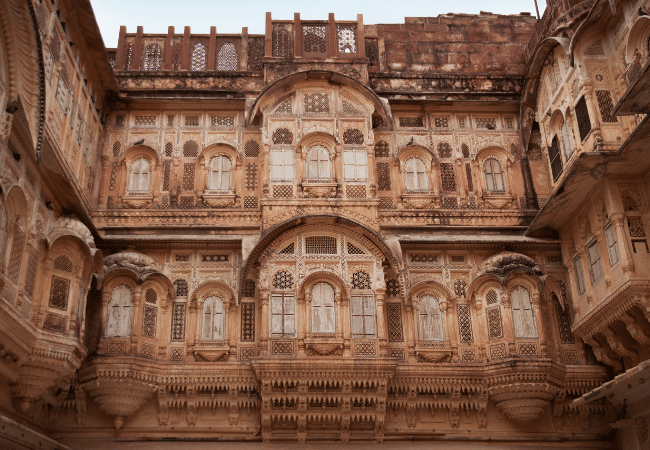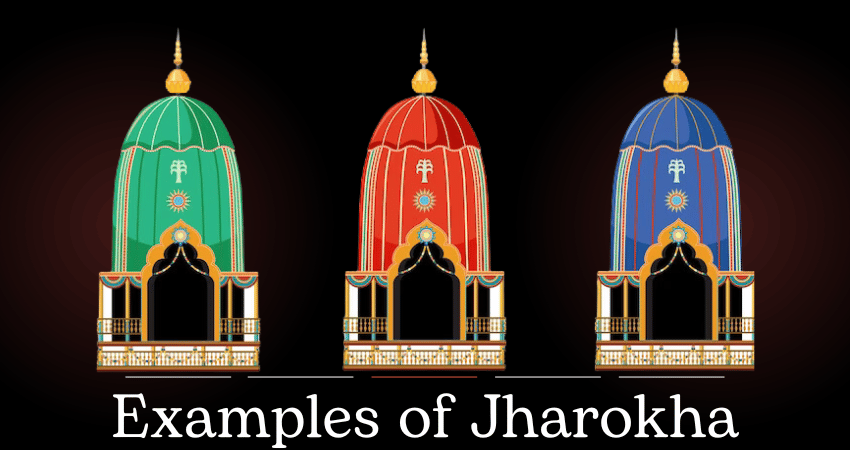If you have ever walked through historic cities or visited traditional Indian homes, you may have come across an architectural feature that is both fascinating and aesthetically pleasing – the jharokha. In this article, we will delve into the world of jharokhas, exploring their history, designs, and cultural significance. From ancient palaces to modern decor, jharokhas have a timeless appeal. Join us as we uncover 10 stunning examples of jharokhas and their enduring charm.
What is a Jharokha?
A jharokha is a unique architectural element that can be described as a beautifully ornate, overhanging enclosed balcony or window, often characterized by delicate latticework. These structures, crafted with utmost precision and craftsmanship, serve both functional and decorative purposes.
Historical Significance of Jharokha
Jharokhas have a rich history dating back to ancient India, particularly during the Mughal era. They were used in palaces, forts, and havelis as a vantage point for royal ladies to observe the outside world without being seen themselves. The historical significance of jharokhas is rooted in their association with privacy and luxury.
Types of Jharokhas
Jharokhas come in various forms. The most common types include
- Chajja
- Rani Padmini
- Hawa Mahal-style
Each type has its own distinct design, catering to different architectural preferences.
Examples of Jharokha
Examples of Jharokha are explained in given below:
The Art of Jharokha Design
Crafting a jharokha is a true art form. Skilled artisans painstakingly carve intricate patterns and designs into wood, stone, or metal to create these architectural marvels. The designs often include floral motifs, geometric patterns, and depictions of nature.
Jharokhas in Indian Architecture
In India, jharokhas are an integral part of traditional architecture. They can be found in Rajasthan, Gujarat, and other regions, adorning palaces, havelis, and temples. Each state offers a unique spin on jharokha design, showcasing regional diversity.

Jharokhas Around the World
While jharokhas are most commonly associated with Indian architecture, they have made their mark in other parts of the world as well. You can find jharokha-inspired structures in various countries, each adding a touch of Indian elegance to their buildings.
Jharokhas in Modern Architecture
The charm of jharokhas hasn’t been lost in contemporary architecture. Architects and designers worldwide are incorporating jharokha elements into modern buildings, preserving the timeless beauty of this architectural gem.
Jharokhas in Home Decor
Jharokhas aren’t limited to grand palaces; they can be a beautiful addition to your home decor. Incorporating jharokha-inspired furniture, windows, or wall art can add a touch of regal opulence to your living space.
The Symbolism of Jharokhas
In Indian culture, jharokhas symbolize more than just architectural beauty. They represent a connection to the past, a tribute to the skills of artisans, and a celebration of India’s rich heritage. Jharokhas tell a story of timeless elegance.
Maintenance and Preservation
Preserving jharokhas is crucial to maintaining their splendor. From regular cleaning to protective coatings, proper care ensures these architectural gems withstand the test of time.
Jharokha in Pop Culture

Jharokhas have also left their mark on pop culture. They have appeared in numerous Bollywood movies, adding a touch of old-world charm to the silver screen. Bollywood’s love affair with Jharokhas is undeniable.
In the world of architecture and design, jharokhas hold a special place. Their historical significance, intricate designs, and timeless charm make them a testament to the craftsmanship of artisans throughout the ages. Whether adorning palaces, modern buildings, or our homes, jharokhas continue to captivate us. As we embrace the future, we must also cherish these cultural treasures from the past.
FAQs about Jharokha
What is the origin of the word ‘Jharokha’?
The word ‘Jharokha’ is of Sanskrit origin, derived from the words ‘Jhar’ meaning ‘window’ and ‘Kha’ meaning ‘in.’
Are there any famous jharokhas in India?
Yes, some of the most famous jharokhas can be found in the Hawa Mahal in Jaipur, the Patwon Ki Haveli in Jaisalmer, and the City Palace in Udaipur.
What materials are jharokhas typically made from?
Jharokhas can be crafted from a variety of materials, including wood, stone, metal, and sometimes even glass.
Can I incorporate jharokha elements into my home decor even if I don’t live in India?
Absolutely! Jharokha-inspired decor is appreciated worldwide and can add a touch of Indian elegance to any home.

